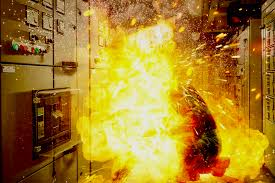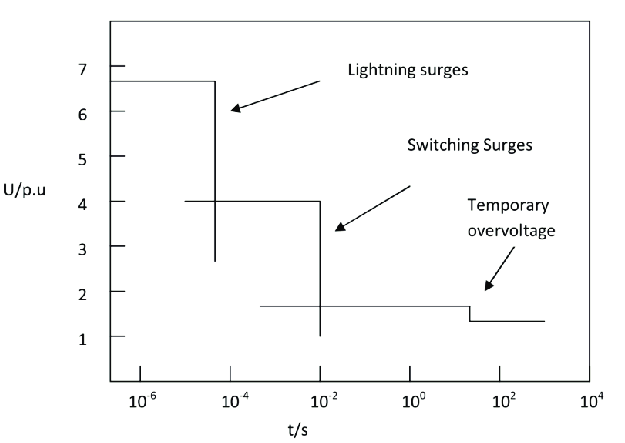Unveiling the Hazards of Arc Flash Events
Arc Flash awareness is crucial for anyone working in environments where electrical hazards exist. It refers to having a comprehensive understanding of the dangers associated with arc flashes, the factors that contribute to their occurrence, and the preventive measures necessary to mitigate risks and ensure safety.
The NFPA 70E standard underscores the critical importance of arc flash safety in industries through its clauses. It mandates risk assessments to identify potential arc flash hazards and determine suitable safety measures. Additionally, the standard specifies requirements for personal protective equipment (PPE) selection and usage based on the results of arc flash risk assessments. Clear boundaries for arc flash and arc flash protection are defined, ensuring that workers understand safe distances and access limitations. Furthermore, the standard mandates training programs to educate workers on recognizing and mitigating arc flash risks, promoting a culture of safety in the workplace.
Arc Flash and Arc Blast:
An Arc flash is an electric arc event with thermal energy dissipated as radiant, convective, and conductive heat – IEEE 1584
It is a sudden release of electrical energy due to a fault or short circuit, causing an explosion of intense heat, light, and pressure. This event can result in severe injuries, fatalities, and equipment damage
An Arc Blast A source of possible injury or damage to health from the energy deposited into acoustical shock-wave and high-velocity shrapnel- NFPA70E
It is a sudden and intense explosion resulting from the extreme heat generated by an arc flash. This heat causes rapid expansion of air and vaporization of materials, producing a high-pressure shock wave.
- The temperatures during an arc blast can reach up to 35,000 degrees Fahrenheit (19,427 degrees Celsius), leading to the violent displacement of air and materials.
- The pressure wave from the arc flash can reach over 2,000 ft/s resulting in hearing loss, collapsed lungs, and blunt force trauma.
- Arc flashes are responsible for over 2,000 injuries per year in the US, many of which result in permanent disability.

Figure: A potential Arc Blast
Reasons for Arc Flash
Arc flashes occur due to a variety of reasons, often related to the electrical system’s design, maintenance, and operation. Understanding the major causes of arc flashes can help in identifying and mitigating the risks.
Table: Primary factors for Arc Flash
Human Error |
1. Improper Work Procedures
2. Lack of Training 3. Failure to Use PPE
|
Equipment Failure |
1. Improper Maintenance
2. Defective Components 3. Aging Equipment |
Electrical Faults |
1. Short Circuits
2. Ground Faults 3. Overvoltage |
Environmental Factors |
1. Dust and Debris
2. Moisture 3. Corrosive Atmospheres |
Design Flaws |
1. Inadequate Insulation
2. Improper Clearance 3. Faulty Circuit Protection |
Operational Factor |
1. Switching Operations
2. Overloading Circuits 3. Loose Connections |
External Factors |
1. Rodent Infestation
2. Physical Damage |
Effects of Arc Flash :
-
- Extremely high thermal energy – temperatures several times the solar surface temperature, first-degree to fourth-degree burns

- Injuries caused by explosive pressure waves and flying parts
- Eye damage due to intensive UV radiation
- Permanent damage to the hearing organs due to the blast effect
- Damage to the respiratory system by toxic gases and particles due to the melting and evaporation of metals.
- Equipment Damage: Destruction of Components, Fire Hazard and Costly Repairs and Replacements.
- Operational Downtime: Business Interruptions, Productivity Loss and Compliance and Legal Issues
How we can avoid Arc Flash:
Preventing arc flash incidents requires a combination of engineering controls, administrative measures and personal protective equipment (PPE) by conducting Arc Flash Evaluation. Here are key strategies to avoid arc flash incidents by conducting Arc Flash Analysis with the help of short circuit and Relay coordination Study:
- Engineering Controls:
- Arc Flash Risk Assessment
- Equipment Maintenance
- Equipment Upgrades
- Overcurrent Protection Devices
- Remote Operation
- Administrative Measures:
- Safety Procedures
- Work Permits
- Lockout/Tagout (LOTO)
- Job Planning
- Risk Assessment
- Personal Protective Equipment (PPE):
- Arc-Rated Clothing
- Eye and Face Protection
- Hand and Foot Protection
- Head Protection
- Training and Awareness:
- Electrical Safety Training
- Emergency Response Training
- Regular Refresher Training
“Creating a safe workplace without compromising quality is essential” for maintaining the well-being of employees and the integrity of operations.
We the Power Projects will help you to become a safe workplace.
Arc Flash Study called Arc study are crucial for preventing electrical accidents, ensuring personnel safety, complying with regulations and minimizing downtime caused by electrical incidents through Arc Flash Analysis Calculations.
- Arc Flash Study / Assessment Requirements:
- Data Collection
- System Modeling and Analysis
- Arc Flash Assessment
- Labeling
- Arc Flash Study Report
- Training and Implementation
- Periodic Review and Update
- Arc Flash Study Standards:
Compliance with relevant standards and regulations, such as NFPA 70E (Standard for Electrical Safety in the Workplace) and OSHA regulations, is essential throughout the arc flash study process.
Arc Flash Study / Analysis Cost
It is based on,
- Size and Complexity of the System
- Details required
- Existing documentation and discrepancies of inputs
- Geographical location
- Regulatory requirements
Our Services includes,
- Complete Arc Flash Assessment
- System one-line diagram
- Short circuit study
- Relay coordination (Overcurrent protective device analysis)
- Arc Flash calculation
- Incident Energy Level
- Arc Flash Boundary
- PPE recommendations as per NFPA – 70E 2021
- Soft copy of labels
- AC & DC Arc Flash
Power Projects: The leading Arc Flash Study company or Consultants, we don’t just acknowledge the Arc Flash Hazard Analysis ; we’re equipped with a team of skilled engineers dedicated to resolving these challenges for clients across the world. This is precisely why we extend our services to include comprehensive training on workplace electrical safety. Contact us to learn more about the Arc Flash Study & on-site training and book a call with our team.





No comment